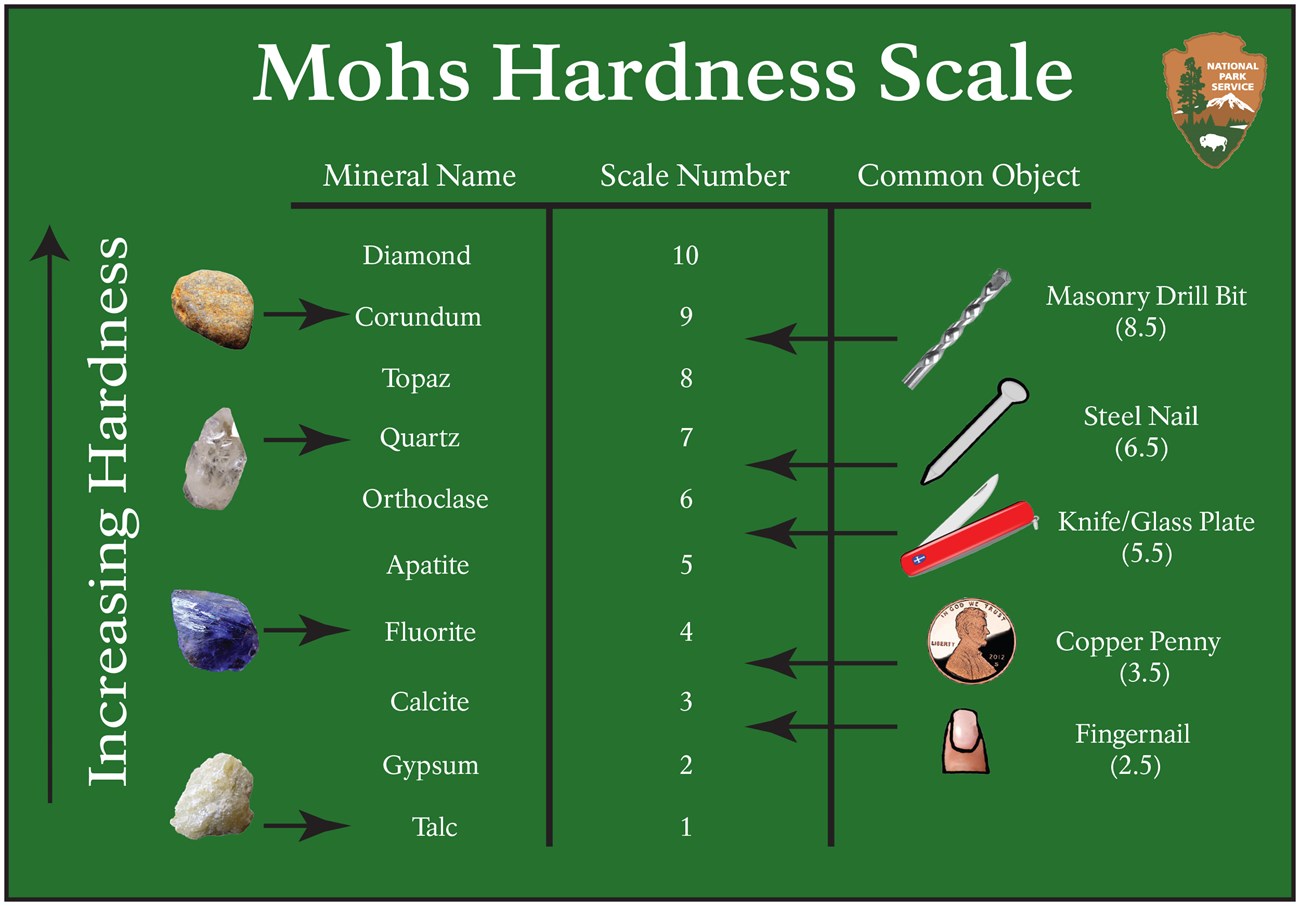This image contains a table relating mineral hardness for a few selected minerals with common objects that could be used to test hardness. The title, Mohs Hardness Scale is accompanied with the National Park Service arrowhead symbol. The minerals are listed from hardest to softest with their hardness scale number as follows: Diamond, 10; Corundum, 9; Topaz, 8; Quartz, 7; Orthoclase, 6; Apatite, 5; Flourite, 4; Calcite, 3; Gypsum, 2; and Talc, 1. The Common Objects for hardness comparisons are listed a column to the left as: Masonry Drill Bit, 8.5; Steel Nail, 6.5; Knife/Glass Plate, 5.5; Copper Penny, 3.5; and Fingernail, 2.5.
NPS illustration by Heather Walborn, Guest Scientist (2013-2014), NPS Geologic Resources Division.
